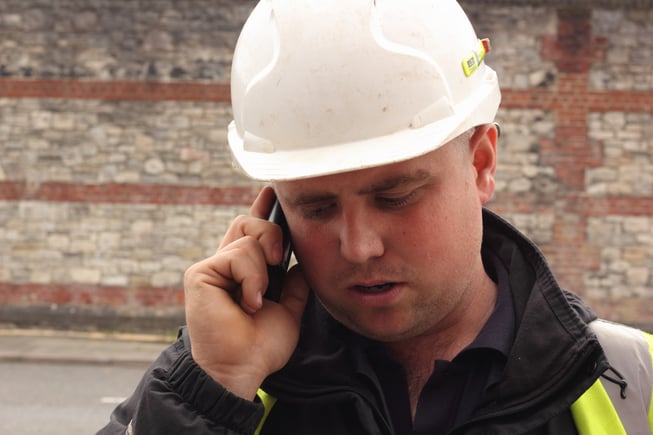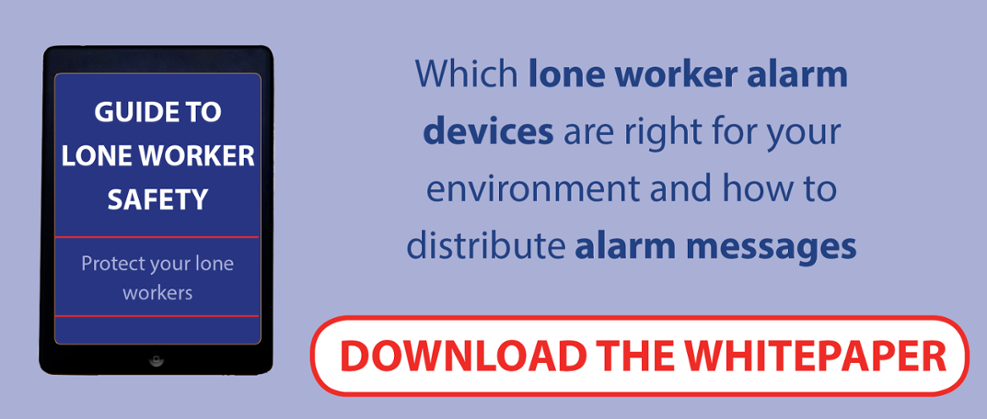
According to Inter Safety, manufacturing businesses are within the top 3 highest risk environments to work in, and if we start considering the greater risks that lone workers face compared to other types of workers, then the need to address the situation with special care becomes more relevant.
So, first of all, who exactly is a lone worker inside a manufacturing company? Generally, lone workers are defined as those who regularly work alone, without contact from another employee or supervision, resulting in exposure to greater risk than employees who work side-by-side with others. We provide many solutions to engineers, maintenance workers, operators and production staff who often work in isolated parts of the factory, site or plant, away and out of sight from colleagues. Some more specific examples would include:
- Employees who consistently and regularly work out of sight of other employees.
- Contractors whose work takes them to remote locations.
- People who work outside the normal hours of operation, often alone. These may include security workers, janitors, and others whose job duties are different than typical employees of the facility.
- Maintenance workers who come in to take care of problems, especially those that other employees aren't used to seeing on a regular basis.
- Self-employed workers who periodically visit your plant.
So, given that they face greater risks than other workers, what does the law currently say about protecting them? Should there be more regulations in place around lone workers? And what are the benefits of safety devices for lone workers? Let's look into all this a bit more in depth.
What the Law Says
The Health and Safety at Work Act 1974 Section 2(1) identifies the duty of employers to keep their employees safe as much as is practical, no matter if they are surrounded by colleagues or alone.
Even though in the UK there are no special legal duties imposed on employers regarding the health and safety of lone workers, the Health and Safety Executive (HSE) does make it clear that employers should provide training, supervision, monitoring and support for lone workers.
As mentioned previously, the physical hazards for lone workers in the manufacturing industry are huge; far superseding even that of the average lone worker (and if you want to learn more about the hazards of lone working, have a read at this article). Therefore, all things considered, it is imperative that lone workers in the manufacturing industry are better protected from many of the risks inherent within the profession.
In some respects, it’s quite easy to understand why there aren't any specific regulations around monitoring devices for lone workers. Primarily, some companies employ as many as a few thousand staff members that will likely work alone at some point. This would mean that almost every member of staff would have to be equipped with a personal safety device; an economic minefield for most businesses in the UK. However, this shouldn’t be a deterrent for businesses eager to provide protection and security for their staff.
Ultimately, the law should specify a lone working hierarchy that allows companies to identify who the high and low risk lone workers are and put the right safety devices in place. For example, those deemed high risk workers would be ones that work directly with heavy machinery, whereas a low risk worker could be someone who works alone in an office. Hence, while it is recommended that all lone workers should have an alarm, it is ultimately the high risk lone workers that should be guaranteed one by law.
Organizations of all sizes can promote lone worker safety with specific policies of communicating with workers and using available technology to track worker location and movement. This might take the form of lone worker training or a commitment to ensure that all workers are communicated with throughout the day (the frequency depending on what level of risk the worker is under). It can also be achieved by maintaining an up-to-date record of any health risks a lone worker might have.
The best solutions to improve the safety of your lone workers is a continuous two-way communication. In most cases providing staff with mobile devices that allow voice communication should be used, as workers usually keep these devices with them at all times and are brilliant in an emergency.
Such mobile communication devices should be robust enough to work in hazardous environments and incorporate features like "panic buttons" and "man-down" within the handset. Digital Radio technology is a great example of this as well rugged smartphones like the Atlas PNC460. Some safety systems include automatic check calls that have to be answered by the worker. Failure to respond will activate an alarm message, which is automatically distributed to colleagues to make them aware of the incident so that they can respond accordingly and in line with their lone worker procedure. It's also important that each alarm triggered is properly recorded and logged in an audit trial which can be reviewed in order to continuously make improvements to the procedure.
To return to one of the original questions, yes lone workers should be better protected and the law changed to make it illegal for lone workers to go without a personal safety device, but only lone workers that are exposed to higher risks. Of course, it is advisable that every lone worker should have an alarm, but as this is not feasible in places that employ up to a thousand employees, we believe that the most realistic option would be for high risk lone workers to be covered by law at minimum.






